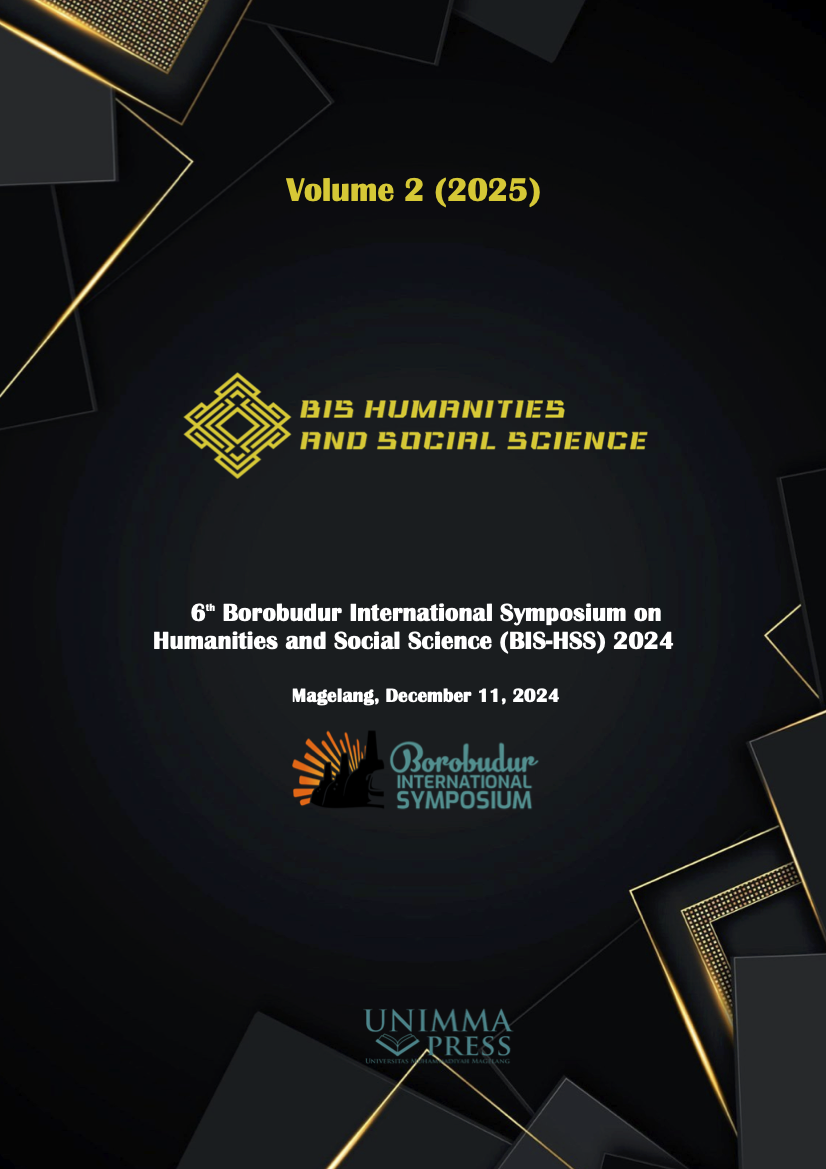The Quran and Hadith as the basis for creating religious pantun in Malay pantun
Keywords:
Quran, Hadith, Creating, Religious pantun, MalayAbstract
Pantun is an original form of Malay poetry – especially in Indonesia and Malaysia – that displays balance, harmony and flexibility as part of human interaction. The interaction of Malay society allows for mutual advice through Pantun Agama. The Quran and hadith are the basis for the creation of Pantun Agama. Pantun Agama in this study is a collection of Overbeck which was later published by Balai Pustaka under the title Pantun Melayu. The purpose of this study is to describe the Quran and Hadith as the basis for the creation of Pantun Agama. This study is a descriptive qualitative study with a focus on content analysis. The results of the study indicate that there are verses of the Quran and the text of the hadith that are the source of the creation of Pantun Agama. The verses of the Qur’an as the basis for creating religious pantun include the themes of The Believers (QS. Al-Hujaraat: 15), worship (QS. Al-Muddatthir: 42-43), tawakkal (QS. Huud: 123), dhikrullah (QS. Al-Ahzab: 41-43), hajj (QS. Al-Baqarah: 158), ask for forgiveness to enter the heaven (QS. Ali Imraan: 133), and self-reminder from hell (QS. At-Tahrim: 6). Meanwhile, the Hadith texts as the basis for creating religious pantuns include the themes of The glory of prophet Muhammad pbuh (Jami’ at-Tirmidhi 3615), knowledge (Jami’ at-Tirmidhi 2648), Sharia (Muslim 1337b, 40 Hadith Nawawi 9), The command to follow ulama’ (Sahih Bukhari 100, Sahih Muslim 2673a), Prohibition of Breaking Promises (Sahih Bukhari 1870), and Tawbat/Repent (Sahih Muslim 2759a).
References
[1] Wafa. Masrura, Sabari., and Sunandar., “Pantun Melayu Sambas Sebagai Media Dakwah (Studi dalam Tradisi Pulang Memulangkan Di Seranggam Sambas),” Jurnal Sambas, vol. 3, no. 1, pp. 1–12, 2020.
[2] M. Habibi, “Teknik Komunikasi Dakwah melalui Kesenian Tundang Mayang Sanggar Pusaka Kalimantan Barat,” Al-Hikmah: Jurnal Dakwah, vol. 14, no. 2, pp. 253–274, 2021.
[3] Kusnadi, “Pantun Melayu: Kajian Terhadap Pesan Dakwah dalam Tafsir al-Azhar,” Wardah: Jurnal Dakwah dan Kemasyarakatan, vol. 17, no. 2, pp. 155–173, 2016.
[4] J. Junita, M. Mualimin, and A. HM, “Dakwah Kultural Dalam Tradisi Maantar Jujuran Suku Banjar Di Samuda Kotawaringin Timur,” Jurnal Dakwah Risalah, vol. 31, no. 2, p. 138, 2021, doi: 10.24014/jdr.v31i2.10581.
[5] Hasanadi, “SENI DENDANG BENGKULU SELATAN,” Jurnal Penelitian Sejarah dan Budaya, vol. 4, no. 2, pp. 1134–1155, 2018.
[6] N. Muhadjir, Metodologi Penelitian Kualitatif. Yogyakarta: yogyakarta: Rake Sarasin, 2000.
[7] M. D. White and E. E. Marsh, “Content analysis: A flexible methodology,” Library Trends, vol. 55, no. 1, pp. 22–45, 2006, doi: 10.1353/lib.2006.0053.
[8] J. Ahmad, “Desain Penelitian Analisis Isi (Content Analysis),” ResearchGate, no. June, pp. 1–20, 2018, doi: 10.13140/RG.2.2.12201.08804.
[9] L. J. Moleong, Metodologi Penelitian Kualitatif. Bandung: Remaja Rosda Karya, 2018.
[10] W. Zuchdi, Darmiyati dan Afifah, Analisis Konten Etnografi dan Grounded Theori dan Hermeneutika dalam Penelitian. Yogyakarta: Bumi Aksara, 2018.
[11] Piah, Harun Mat. (1989). Puisi Melayu Tradisional: Suatu Pembicaraan Genre dan Fungsi. Kuala Lumpur: Dewan Bahasa dan Pustaka Kementerian Pendidikan Malaysia.
[12] Ming, Ding Choo. (2010). “That Mighty Pantun River and Its Tributaries”. Wacana, Vol. 12, No. 1, April 2010: 115—130.
[13] Fang, Liaw Yock. (2011). Sejarah Kesusastraan Melayu Klasik. Jakarta: Yayasan Obor Indonesia.
[14] Chaniago, Darwin S. (1997). Berbalas Pantun Remaja. Bandung: Pustaka Setia
[15] T. Effendy and M. Al Mudra, Tunjuk ajar dalam pantun Melayu. Yogyakarta: Yogyakarta : Balai Kajian dan Pengembangan Budaya Melayu (BKPBM), 2004.
[16] Y. Wulandari, Ajaran Adat dalam Pantun Adat Minangkabau. Yogyakarta: K-Media, 2021.
[17] Hollander, J.J. de. (1984). Pedoman Bahasa dan Sastra Melayu. Jakarta: Jakarta: Balai Pustaka
[18] Reid, Anthony. (1992). Asia Tenggara dalam Kurun Niaga 1450-1680, Jilid I: Tanah di Bawah Angin. Jakarta: Yayasan Pustak Obor Indonesia
[19] Andaya, Leonard Y. (1979). “A Village Perception of Arung Palakka and The Makassar War of 1666-69” dalam Perception of The Past in Southeast Asia, ed. A. Reid and D. Marr. Singapore, Heinemann, p 360—378
[20] E. Gani, “Kajian Terhadap Landasan Filosofi Pantun Minangkabau,” Komposisi: Jurnal Pendidikan Bahasa, Sastra, dan Seni, vol. 10, no. 1, pp. 1–10, 2012, doi: 10.24036/komposisi.v10i1.49.
[21] T. Effendy and M. Al Mudra, Tunjuk ajar dalam pantun Melayu. Yogyakarta: Yogyakarta : Balai Kajian dan Pengembangan Budaya Melayu (BKPBM), 2004.
[22] H. J. Waluyo, Teori dan Apresiasi Puisi. Jakarta: Jakarta: Erlangga, 1987.
Downloads
Published
Conference Proceedings Volume
Section
License

This work is licensed under a Creative Commons Attribution-NonCommercial 4.0 International License.

